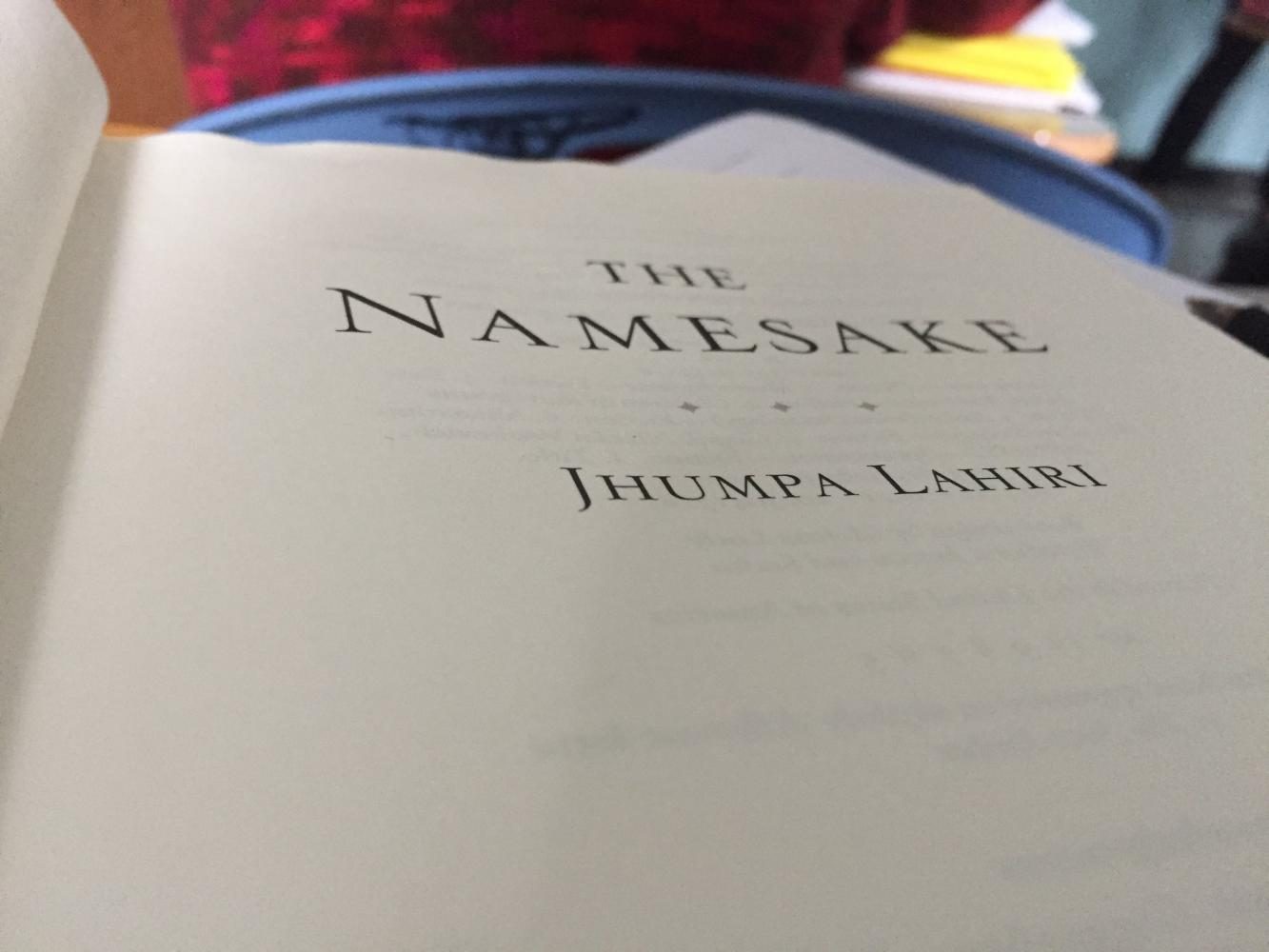The Namesake: Better in Print than in Picture
Jhumpa Lahiri’s “The Namesake”; the story of a young man’s journey to discover his true identity.
May 18, 2017
The Namesake, a film that embodies the spirit of what one man can accomplish when he is not himself, follows Gogol, the son of Ashima and Ashoke Ganguli. The Ganguli family moves from India to America early on in the film; Ashoke understands the importance of merging his culture with the one he will be living in, whereas his wife struggles with this idea. It is their son, however, who has the hardest time finding a balance between his Russian name, American lifestyle, and Bengali heritage. Gogol experiments with his true name and one he hopes to establish for himself. Through trial and error, he finally adopts a new name, but along with said name comes a new personality. The film captures Gogol’s use of women who represent everything his old life as Gogol was not, and his desperate attempt to fit in with how they live their lives. He eventually becomes stuck between being someone else, and holding on to everything his father represented.
The lighthouse scene is mentioned twice, in said scene Ashoke forgets his camera and tells his son he will have to simply remember the time they spent together near the water. This foreshadows the gifting of “The Overcoat” from Ashoke to Gogol; the book is meant to remind everyone, especially Gogol, to appreciate the little things and to not forget that even the simplest memories, and insignificant details, add up to define our namesake. We should not ask for more when the life we are given is something to be cherished, something Ashoke learns while reading the story during a train derailing he survives, and the inspiration he receives for his son’s name. Gogol learns that to love his true self means to love his father.
The Namesake by Jhumpa Lahiri became a movie in 2006, depicting the journey of Gogol Ganguli to Nikhil. Written by Sooni Taraporevala and Lahiri, the film was directed by Mira Nair, and received 7.6/10 stars on IMBD.com. Tabu stars as Ashima, Irrfan Khan plays her husband, Ashoke. The beginning of the film focuses on Ashima’s transition into her new American lifestyle. The movie then shifts to Ashima and Ashoke’s son Gogol, played by Kal Penn. Through trial and error, he discovers himself through the people he lets into his life, and the blend of their personalities and beliefs he adheres to.
We begin with Ashima Ganguli arriving home to find that a man is patiently waiting to meet her; she slips on his shoes before entering the room he is in, this becomes important later. The man, Ashoke, marries her and the two move to America. Gogol is born shortly thereafter, his name selected by his father, not grandmother- her letter containing Gogol’s “good name” was lost in the mail. The significance of his name comes from the novel his father was reading during a horrific train derailment. Ashoke goes on to say, “we all come out from Gogol’s overcoat,” a message Gogol takes lightly. As Gogol ages he encounters many women, some of which develop of symbol for him. Maxine Ratliff, played by Jacinda Barrett, his second girlfriend, pulls him the furthest from his heritage. Once a symbol of freedom, upon the passing of his father she becomes a reminder of his guilt. Gogol slips on his father’s shoes, and walks a mile in them for the rest of the film. He marries an Indian woman named Moushumi, played by Zuleikha Robinson. Moushumi, however, has a love affair with France, neglecting her husband who becomes a symbol of her defeat. We end with Gogol and Ashima returning to where they first began, with new perspectives, experiences, and a new life.
Ashima and Ashoke’s burning flame, Gogol’s train wreck of relationships, and Pierre- who is that guy? Director Mira Nair’s film falls short of Jhumpa Lahiris’s novel, the foundation of which the movie is based. Nair’s depiction of Gogol barely meets the struggling, knowledgeable young man we meet in Lahiri’s novel. Gogol is cold in the film, he isn’t isolated from what he doesn’t want to be, he is just rough around the edges, something he never intended to be in the novel. In the film, Gogol represents your typical misfit in search of the American dream, not desperately trying to find who he is meant to be. Our Gogol faces bullies and racist party guests in the film, he is constantly teased in order to build up more of a victim mentality for him. Ashima and Ashoke too lose much of their conservative charm, depicted by Nair as loving, and hopelessly romantic. Sonia even takes on a new face, known through the book as being her own person, in the film this takes a whole new meaning. Sonia is the perfect archetype for “rebellious teen” due to how Nair paints her. The film falls far from the novel, feeling more like an over glorified story of the typical immigrant family, struggling to fit in with their American counterparts and striving for the all holy, American dream.
Lahiri played up Gogol’s assimilation into Maxine’s lifestyle extensively in the novel. The movie doesn’t express this idea as well. The importance of writing in Gogol’s willingness to abandon his mother, his ties to his father- a symbol of Bengali tradition- is a driving force that defines his future. The movie only makes it seem as if Gogol visits the Ratliff family- who symbolize his freedom-, where as in the novel we know he spends every moment he is not at work with the Ratliff family, moving in after a short period of time. The answering machine described as neglected in the book is somewhat mentioned in the movie, but is not given the spotlight it deserves. This important symbol shows how out of reach Gogol is from his heritage. The more details we are given about Maxine and Gogol’s relationship helps further explain why too much freedom causes Gogol to lose himself.
If you plan on watching this film yourself I suggest that you skip the book. Nair’s film falls short of Lahiri’s meticulously detailed novel that allows for a consistent flow of Gogol’s coming of age story, and realization that he himself comes from Gogol’s overcoat. Quite frankly, the movie misses this idea and focuses more on the budding romance of Ashima and Ashoke. If a sappy love story, embarrassing parents, and rebellious teenagers are your cup of tea, then this movie was made for you. On the other hand, for analytical, symbolic story cravers, I suggest using Lahiris’s words to paint your own mental movie, one that checks off each important symbol and detail. We all come from Gogol’s overcoat, but Nair did not learn that in most cases what we have is all we need, adding a false persona to the voice of Gogol Ganguli, resulted in the death of my appreciation for her film.










